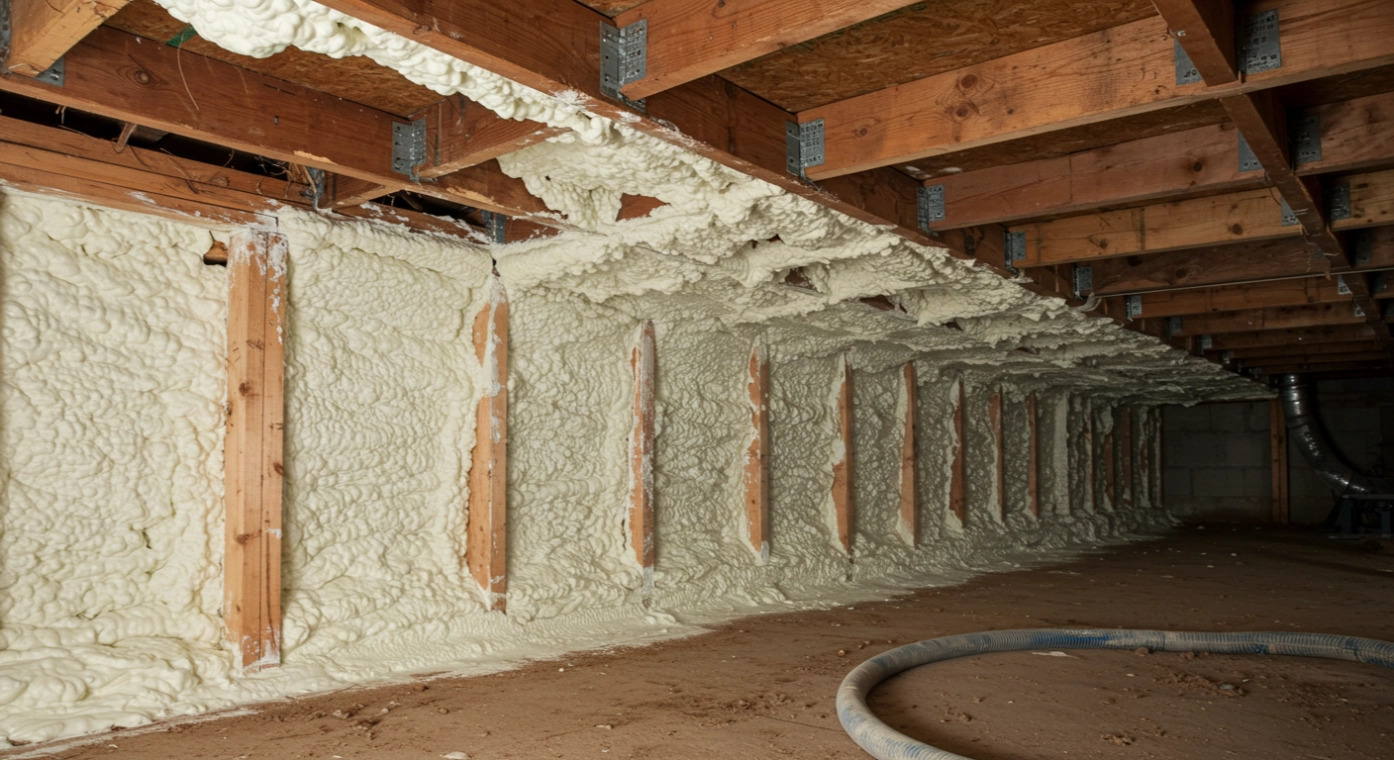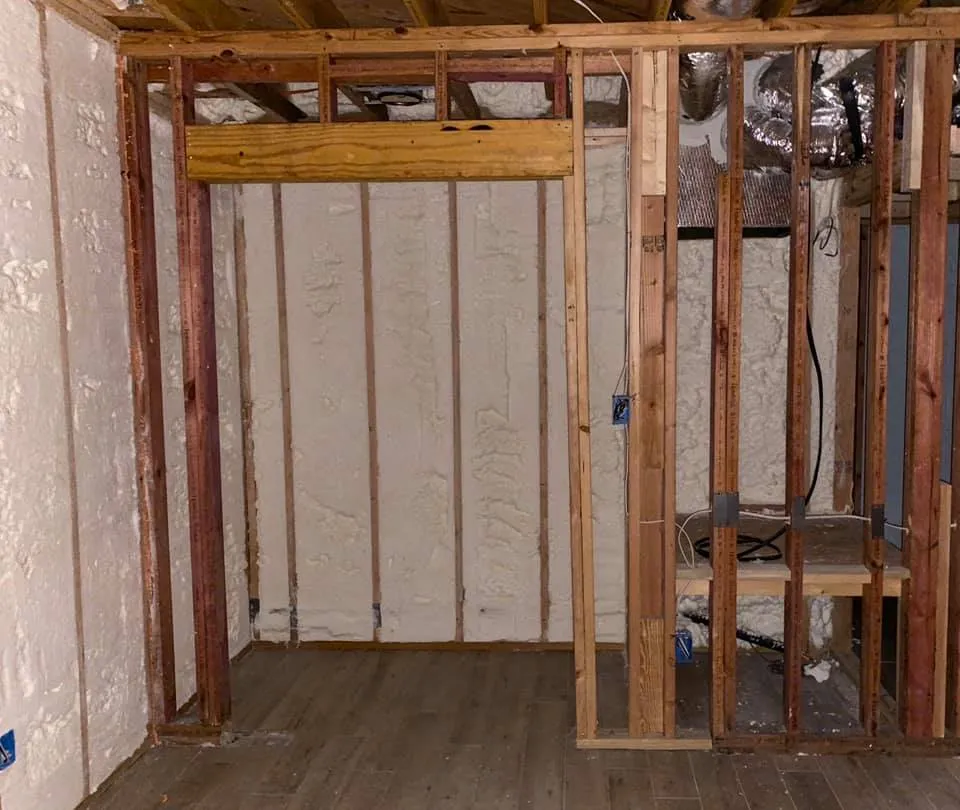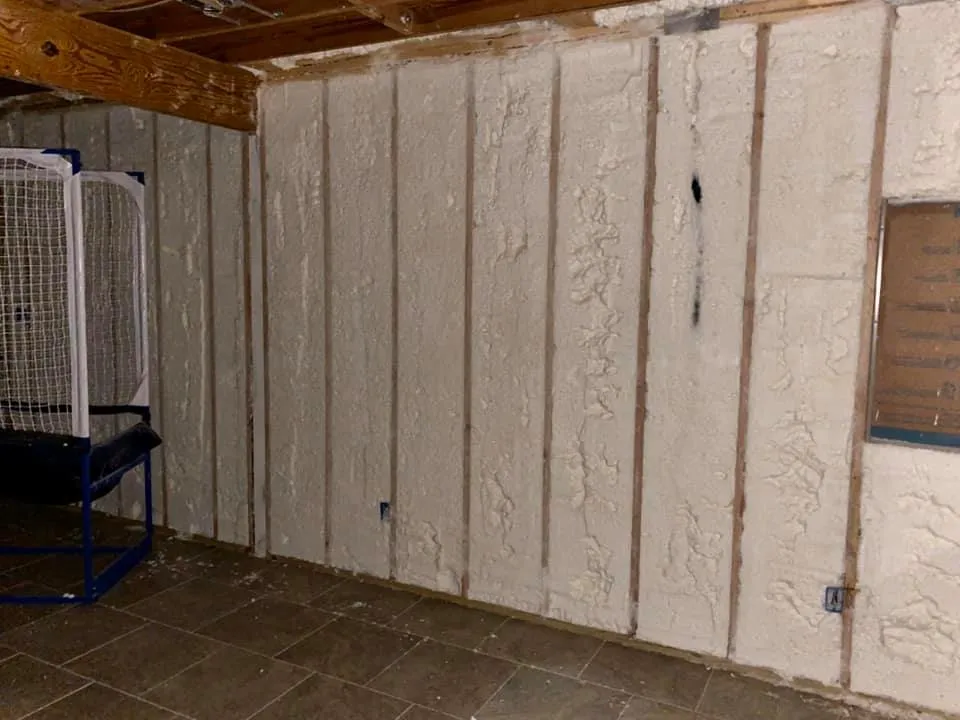Spray foam insulation is the most effective defense against humidity in crawl spaces across Schertz, TX. Its seamless air seal, moisture resistance, and insulation performance reduce humidity-driven issues such as mold, wood rot, and condensation. Unlike traditional insulation, spray foam adheres to irregular surfaces and creates a continuous barrier that blocks both vapor and air movement.
Schertz’s hot-humid climate amplifies crawl space challenges. Unsealed gaps allow warm, damp air to enter and condense on cooler surfaces, leading to mold and structural deterioration. Spray foam eliminates these pathways, actively stabilizing conditions year-round. Information provided here is based on field-tested outcomes from actual crawl space projects in similar climate zones, including those completed in Central and South Texas.
How Spray Foam Outperforms Other Insulation in Humid Crawl Spaces
| Insulation Type | Vapor Barrier | Air Sealing | Mold Resistance | Performance in Humid Climates | Lifespan | Maintenance Needs |
|---|---|---|---|---|---|---|
| Open Cell Spray Foam | Moderate | Excellent | High | Effective for humidity control | 15-20 yrs | Low |
| Closed Cell Spray Foam | High | Excellent | Very High | Superior humidity resistance | 20-30 yrs | Very Low |
| Fiberglass Batts | Poor | Poor | Low | Fails in damp environments | 10-15 yrs | High |
| Rigid Foam Boards | Moderate | Partial | Medium | Depends on sealing quality | 20-25 yrs | Medium |
| Cellulose | Low | Poor | Low | Prone to moisture absorption | 10-20 yrs | High |
Bonus Tip
For crawl spaces in Schertz, closed cell spray foam is the better option. Its rigid structure doubles as a vapor retarder, preventing moisture migration even during peak humidity months.
Key Technical Specifications
| Specification | Open Cell Spray Foam | Closed Cell Spray Foam |
|---|---|---|
| R-Value per Inch | 3.6 – 3.9 | 6.0 – 7.0 |
| Water Permeability | High | Low |
| Air Impermeability | Yes | Yes |
| Structural Reinforcement | No | Yes |
| Application Thickness | 3-4 inches typical | 1-2 inches typical |
| Drying Time | 24 hours | 24 hours |
Why Schertz Crawl Spaces Are Susceptible to Humidity Damage
Crawl spaces in Schertz are exposed to elevated humidity for most of the year. Average relative humidity levels often remain above 60%, with peaks in summer surpassing 80% (NOAA, 2024). This promotes condensation on exposed framing, HVAC ducts, and plumbing. Traditional venting strategies often backfire by inviting moist outdoor air inside, especially during nighttime temperature drops.
Soil moisture and poor drainage add to the problem. Without a sealed vapor barrier, moisture from the ground enters the crawl space air. Combined with warm exterior air entering through vents or gaps, this raises dew point risk significantly.
Bonus Tip
Install a dehumidifier only after applying spray foam and sealing all exterior air pathways. Running a dehumidifier without an air seal only treats symptoms, not the cause.
Market Data Supporting Spray Foam Effectiveness
- Energy Star reports show that sealed and insulated crawl spaces can reduce humidity levels by up to 50% compared to vented ones.
- A 2022 study by Building Science Corporation found that closed cell spray foam had the highest moisture control rating in humid southern climates.
- Texas A&M Extension research confirms that homes with encapsulated crawl spaces show lower microbial activity and better indoor air quality.
Things to Consider Before Making a Decision
- Type of Spray Foam: Closed cell performs better in high-humidity zones. Open cell may be suitable for moderate climates with proper drainage.
- Crawl Space Accessibility: Tight or obstructed crawl spaces may affect application method and coverage consistency.
- Existing Damage: Mold remediation or structural repairs may be necessary before insulation work.
- Ventilation Strategy: Decide whether the crawl space will be sealed entirely or partially vented. Each approach requires different design considerations.
- Moisture Source Identification: Check for plumbing leaks, grading issues, or groundwater intrusion prior to insulation.
Related Services Stellrr Offers for Crawl Space Solutions
- Crawlspace Insulation: Direct application of spray foam or hybrid methods depending on climate, access, and structure.
- Closed Cell Insulation: High-performance vapor barrier and thermal insulator suited for Schertz humidity levels.
- Insulation Removal: Safe removal of old, compromised insulation that may harbor mold or moisture.
- Wall Insulation: Additional support for homes where crawl space air infiltrates wall cavities.
Common Questions About Spray Foam in Crawl Spaces
Does spray foam trap moisture?
No. Closed cell spray foam resists moisture absorption and prevents vapor movement. When applied correctly, it blocks both liquid and vapor infiltration.
Can it be applied over existing insulation?
No. Existing insulation must be removed to ensure proper adhesion and coverage. Applying over old materials reduces effectiveness.
How long does installation take?
Most residential crawl spaces in Schertz can be completed in 1-2 days, depending on size and access.
Is ventilation needed after sealing with spray foam?
If fully sealed, no ventilation is required. Supplemental dehumidification may be added to manage indoor humidity levels.
Summary and Key Takeaways
Spray foam insulation offers a high-performance solution to control humidity in Schertz crawl spaces. It prevents air infiltration, blocks vapor transfer, and improves long-term structural durability. Closed cell spray foam provides the best results in humid climates. Effective crawl space insulation improves energy efficiency, air quality, and home lifespan.
Make decisions based on crawl space condition, local moisture sources, and long-term humidity trends in the region. Avoid quick fixes. Plan for proper prep, material selection, and sealing strategies.
Get Expert Insulation Guidance
Have questions about the right insulation for your crawl space?
Contact Stellrr for expert insight backed by experience in the Schertz climate.
Email: info@stellrr.com
Phone: (512) 710-2839
Frequently Asked Questions About Long-Term Use
How does spray foam affect indoor air quality?
It reduces mold growth and particulate infiltration, improving overall indoor air.
Does spray foam degrade over time?
No. It maintains its structure and insulation properties when protected from UV light and mechanical damage.
Can pests burrow through spray foam?
Rodents do not eat spray foam, but they may attempt to burrow if access is not sealed elsewhere. Proper sealing around pipes and vents prevents entry.
How do I inspect a sealed crawl space?
Use access panels and monitor humidity using wireless hygrometers to track moisture trends.
What maintenance is needed?
Check for plumbing leaks annually and monitor humidity levels. No insulation-specific maintenance required.





